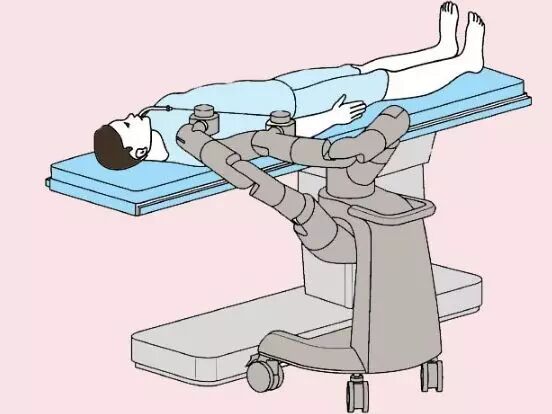For nearly 10 years, the introduction on the website of the medical robotics company Auris, founded in 2007, has been a simple phrase: “A technology company based in Silicon Valley.” Moreover, there is no information about products or technology.

Yet, this nearly decade-old startup secured a $150 million investment last year, the highest funding amount in the robotics sector for that year. Additionally, in April of this year, it acquired Hansen, a company established five years earlier, for $80 million in cash.
Looking at the board members of this company, they are all highly distinguished individuals, including: Ajay Royan (co-founder of Mithril Capital with Peter Thiel), Peter Hébert (co-founder of Lux Capital), and Bijan Salehizadeh (co-founder of NaviMed Capital). Naturally, these board members’ associated capital firms played a significant role in the $150 million funding.
For nearly 10 years, with no profits, no products, and no technology exposure, Auris has continuously attracted investors, giving it a very “stealthy” impression.
The reason behind this is that the founder of Auris is a well-known figure: Dr. Frederic H. Moll. He is a co-founder of Intuitive Surgical, the dominant player in the surgical robotics field, and was instrumental in creating the renowned da Vinci surgical robot. Furthermore, Auris’s acquisition of Hansen is significant because both companies are led by Dr. Moll, reminiscent of Tesla’s acquisition of SolarCity.
Founder: Dr. Moll
According to The New York Times, Moll is known for his reserved personality and soft-spoken nature. He was born into a family of doctors, with both parents being pediatricians, and he is a high school alumnus of Bill Gates, both having attended the prestigious Lakeside School in Seattle.
 Dr. Frederic H. Moll
Dr. Frederic H. Moll
In the 1980s, after graduating with his undergraduate degree, Moll worked at a hospital in Seattle, where he discovered that the harm caused by surgical tools for patients with minor ailments could sometimes be greater than the diseases themselves. He stated, “The incisions and damage caused by surgical tools to enter the human body shocked me.”
Afterward, he took a leave of absence and moved to Silicon Valley, never returning to that Seattle hospital. In 1995, Moll founded Intuitive Surgical, now the king of medical robotics. At that time, the da Vinci robot was developed by SRI International but had not been commercialized. Moll saw its immense potential and recommended it to his then-employer, Guidant, but Guidant deemed the robot concept too advanced and risky, thus unwilling to adopt it. Moll then resigned and gathered a team to establish Intuitive.
Today, we all know how successful Intuitive has become; the da Vinci robot performs minimally invasive surgeries that typically do not require general anesthesia, sparing patients from the postoperative pain associated with traditional surgeries.

The da Vinci robot is priced at 20 million RMB, with a gross margin of 70%, capturing half of the global market share. A study conducted by Wall Street on the 11th anniversary of Google’s IPO found that among 6,000 U.S. public companies, only 13 had a return rate exceeding Google’s (1277%), and Intuitive was one of them.
When Intuitive went public in 2000 (at $9 per share), Moll owned shares worth $13.5 million, and he still holds a significant amount of shares today.
However, two years later, Moll left Intuitive and founded Hansen Medical. Now, Auris’s acquisition of Hansen is seen as paving the way for new products to enter the market. Although Hansen does not have a product as successful as the da Vinci robot, it holds a large number of patents and has a mutual licensing agreement with Intuitive (Hansen must contribute 3% of its sales as patent fees to Intuitive). For Auris’s products to successfully enter the market, acquiring Hansen is almost essential.
Moreover, in May of this year, Auris received its first medical robot “medical license” from the FDA (U.S. Food and Drug Administration), which was granted to the ARES robot for use in observing and treating lung diseases.
Long-Awaited Product: ARES Robot
The full name of the ARES robot is “Auris Robotic Endoscopy System.” Like the da Vinci robot, the ARES robot can also be operated remotely.

Previously, it was believed that ARES was solely focused on microsurgery for cataract removal, but according to relevant patent documents, it may be much more than that.
From the patent documents obtained by the company, Auris is focusing on a field known as “endoluminal surgery,” which refers to flexible robots accessing diseases in the throat, lungs, and gastrointestinal system through natural openings in the body (especially the mouth). IEEE Spectrum reports that Auris has successfully conducted trials of such robots on humans outside the U.S.: in the second half of 2014, Auris funded a small clinical trial of robotic bronchoscopy at a hospital in Costa Rica.
This type of trial conducted outside the U.S. has also been done by Hansen; at that time, Dr. Moll led a team in India to test his robotic catheter over four days of clinical trials.
In fact, this company has even greater ambitions. Auris’s current engineering director, Christopher Cook, expressed the hope of “creating a new generation of surgical robots to expand the application of robots in medical procedures.” It seems that after nearly a decade of accumulation, Auris’s products are poised to make a significant impact, and we look forward to seeing what they will bring.

For more exciting content, please click
Huawei and ABB sign a memorandum of cooperation to help industry enter the fully connected era
Foxconn to replace 46,000 workers with robots, just to cater to Industry 4.0?
Some have studied the relationship between the proliferation of robots in the U.S. and employment, and the results may surprise you
These 11 sets of data tell you how great the potential of China’s industrial robot industry is
 Long press the QR code to follow the public platform
Long press the QR code to follow the public platform Submission email: [email protected] Articles adopted will be rewarded!
Submission email: [email protected] Articles adopted will be rewarded!